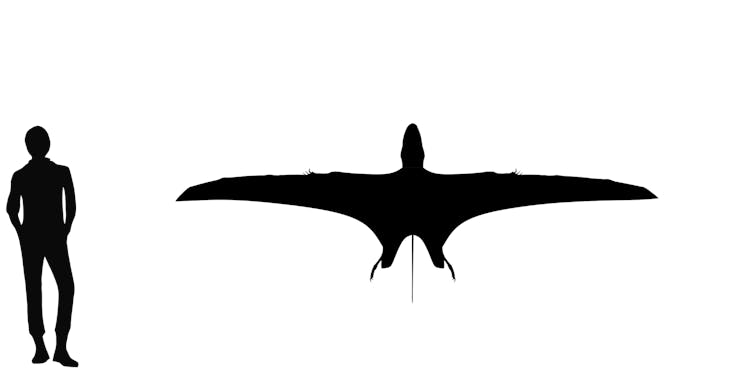


The Upper Jurassic Morrison Formation of the western USA, is famous for its rich dinosaur fauna including Brontosaurus, Diplodocus, Allosaurus, and Stegosaurus. Not all fossils from the Morrison Formation are from giants however, several smaller dinosaurs, mammals, and pterosaurs are known. One of the smallest pterosaurs known from the Morrison is Mesadactylus ornithosphyos, named in 1989 by paleontologists Jim Jensen and Kevin Padian.
The original specimen consists of seven fused sacral (hip) vertebrae, just over 4 cm (just under 2 inches) long. The vertebrae are unique in that the neural spines are fused at their tips, mimicking a condition seen in some birds and larger pterosaurs. The name Mesadactylus is derived from the Dry Mesa locality where the specimen was found, as well as the Greek word “dactylus” meaning finger, a common ending for pterosaurs. The species name, ornithosphyos, is derived from the Greek words “ornitho” meaning bird, and “osphyos” meaning lower back, a reference to the bird-like hip vertebrae.
Since its discovery, numerous bits and pieces from small Morrison pterosaurs have been referred to Mesadactylus, but a recent paper by pterosaur paleontologist Chris Bennett suggests that the only certain material referable to Mesadactylus is the original sacral vertebrae, and that most of the referred material belongs to other unrelated taxa that just happen to be small.
Bennett also indicated that Mesadactylus is probably an anuroganthid. Anurognathids are relatively rare, very small and delicate pterosaurs known from Jurassic age rocks. Anurognathids are characterized by short rounded skulls, large eyes, and short tails. They are thought to have been aerial and acrobatic insect eaters, much like living swifts, swallows, and nightjars. Mesadactylus is larger than most other anurognathids, but would still be quite small, having a wingspan of just about 70 cm (28 inches).
